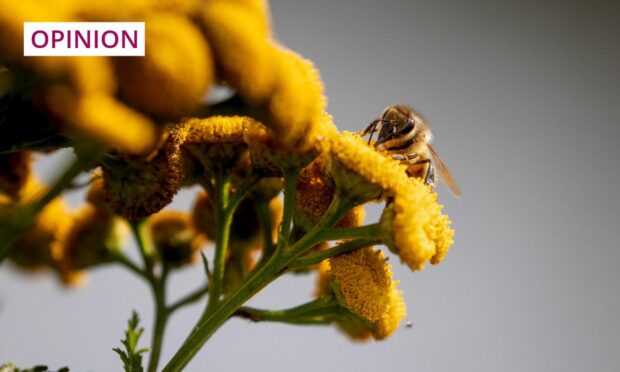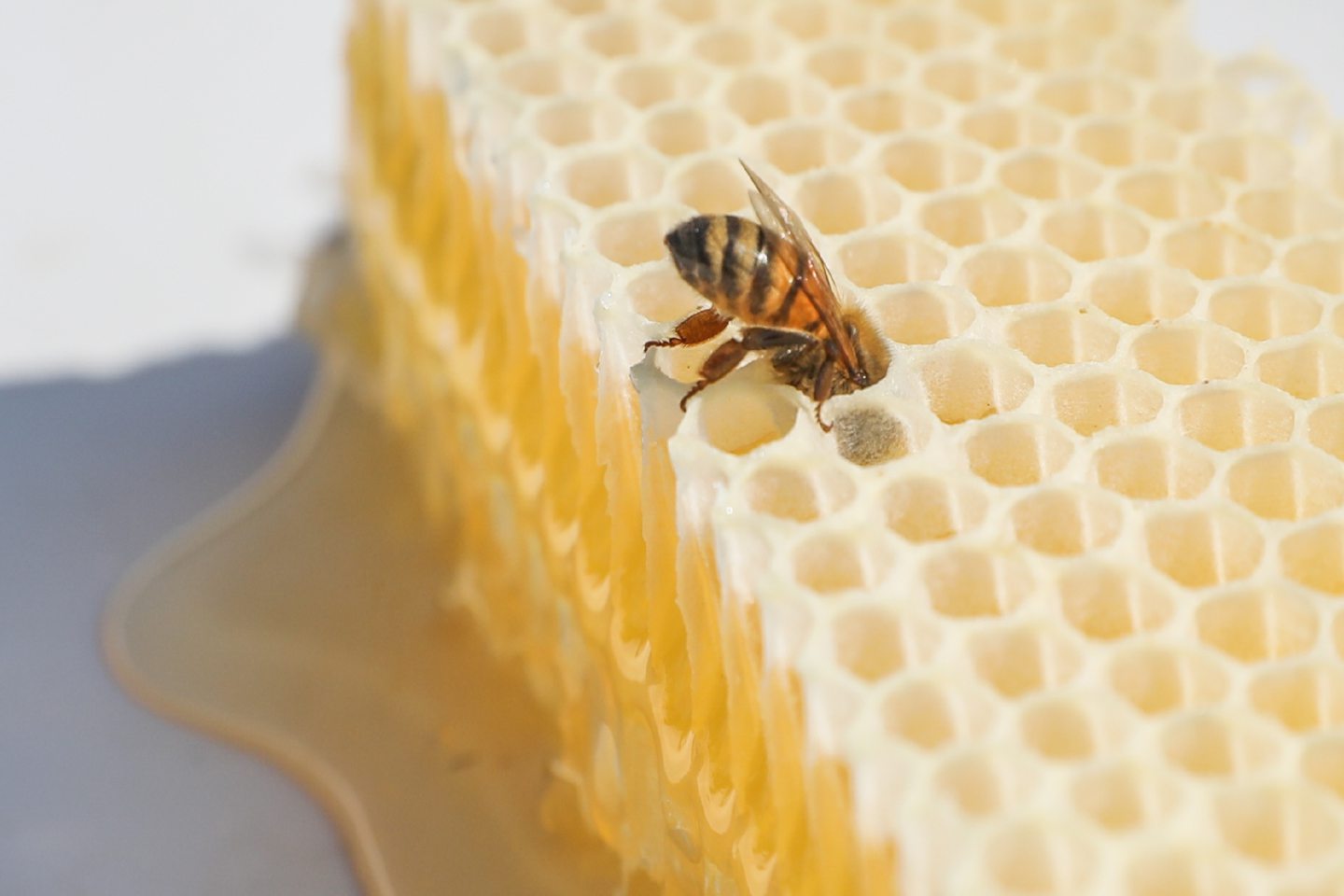As a tinnitus sufferer, I’m accustomed to weird background noises.
Rings and hums come and go, so when a new hum with no obvious source appeared, I thought nothing of it. But an hour later it hadn’t faded and I couldn’t tune it out.
I stepped outside, half-expecting to find an annoying drone flying overhead. But, while the hum was outside too, it was no louder than indoors. I went back inside and pressed my ear against the bedroom wall.
Aha! The sound of tiny wings buzzing against solid objects.
Stepping outside again, I located a small but busy congregation of insects around the gable end of the house. A few were emerging from beneath the corrugated iron roof.
Honey-bees. Not a swarm, but scouts.
As a honey-bee colony grows, it either fills the confines of whatever cavity it occupies, or becomes too large to sustain itself with just one queen.
The existing queen first ensures her legacy by laying eggs that the colony rears into potential new queens. Then, before those new queens hatch as adults, the old queen leaves, taking as much as half of the colony with her. These are the large swarms that are seen temporarily resting in peculiar places.
Time for some vigorous dancing
At this point, or sometimes even before the swarm leaves the hive, scouts fly out in search of a suitable new home. It must have an optimum volume, be a certain height above ground, and have a small, defendable entrance.
Scouts return to the swarm with their recommendations, recruiting other bees to their cause via “waggle dances” that communicate the precise location and, crucially, the quality of the prospective new home. The best quality sites receive the most vigorous, prolonged dances.
Other scouts then visit the recommendations. Inevitably, there are many dances for many different locations but, through a process of elimination, unsuitable spots (and, therefore, dances) are collectively rejected via repeated headbutting from other bees until those dances stop.
Eventually, enough bees are persuaded of one particular option over the others that one dance dominates. A tipping point is reached, and then off they all go.
Tech imitates nature
As with so many things in nature, honey-bees have proved fertile ground for technological inspiration. Research into artificial intelligence (AI) recognises the advantages of decentralised decision-making, where simple interactions between individuals enable the collective to make better decisions than each individual could make on their own.
There is no single bottleneck or point of failure. No human debate or gridlock. If such decision-making can be replicated artificially, autonomous AI can, like bees, react and make choices quickly and instinctively, rather than needing remote support or a single decision-maker.
It’s even possible that drone swarms could fill the pollination void left behind by already-plummeting insect populations
The potential has been acknowledged for decades, but it’s only now that the speed and power of modern AI is able to mimic real-time, instinctive reactions.
As a child of the 1980s, I can’t shake the Terminator vibe of AI, but swarm AI has obvious benefits for things like search and rescue operations, or in “precision agriculture”, where groups of drones or sensors can increase efficiency and reduce waste – estimating yields, detecting disease, or applying fertiliser.
It’s even possible that drone swarms could fill the pollination void left behind by already-plummeting insect populations.
50,000 bees as housemates, anyone?
Back in Braemar, I imagined the scene wherever the swarm was resting – scouts returning and dancing enticingly, encouraging others to inspect our lovely home.
I was oddly excited at the prospect of having 50,000 bees as housemates. As a nature lover, I’d sooner suffer minor inconvenience than harm species already under pressure or persecution. But, obviously, there are limits.
I thought of my friend, who’d opened up an old chimney in her house, only to find a horrendous mess and honey pouring down the bricks. And if just a few dozen bees sounded like this, what on earth would 50,000 sound like?
The bees dispersed that evening. I hoped they’d rejected our house as an option, but a week later they returned, this time emerging inside the office cupboard, half a dozen appearing in the living room. I started to worry.
It's with a mix of delight and trepidation, that I'm sat here typing while I can hear a swarm of bees investigating the sealed chimney in the wall behind me. Can see them doing their wee dances on the roof when I go outside.
— Ben Dolphin 🏴❄️ (@CountrysideBen) August 1, 2023
Coincidentally, a cold morning meant the stove was lit that day, sending a steady pall of woodsmoke wafting along the roof in the direction of the opposite gable end.
I wondered whether scouts, returning to the swarm having inspected our home at other bees’ recommendation, were now furiously headbutting said bees and saying: “No! It’s too smoky!”
Whatever the reason, by mid-afternoon, the bees were gone, and they haven’t returned since.
I hope they’ve found a nice home. I’m sad I won’t get to watch them, but I’m obviously relieved we’re not going to face the reality of 50,000 bees in the house.
To be perfectly honest, though, that would be infinitely preferable to seeing 50,000 AI drones buzzing around the place.
Ben Dolphin is an outdoors enthusiast, countryside ranger and former president of Ramblers Scotland

